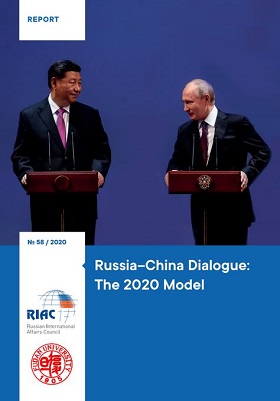It is common knowledge that Eurasia is the largest continent on Earth, spanning over one-third of the planet's total area. It is also the most populous, with over two-thirds of the global population calling the continent home. Eurasia has tremendous natural resources, from oil and gas to freshwater and fertile lands. The peoples of Eurasia can be rightfully proud of the fact that it was here that the oldest human civilizations first appeared, that they have managed to settle in both scorching deserts and freezing tundra, built huge cities and wonderful architectural monuments, laid extensive networks of railways and motorways, and made an invaluable contribution to human culture in all its aspects.
It would only be natural for the sprawling spaces of Eurasia to become united in a single system, where different geographic components would organically complement each other. It would be natural for customs tariffs and visa restrictions dividing our countries to become a thing of the past, for mutual suspicions, long-standing grievances and endless disputes to give way to mutual understanding, a multilateral balance of interests, and an awareness of our common historical destiny. Such a union would primarily benefit the peoples of the Eurasian continent, who would be able to expand their horizons, shed their old fears and biases, and gain radically new opportunities for economic, social and spiritual prosperity. Eurasian unification would also benefit the rest of the world, which would be the beneficiary of a powerful development engine ready to pull other continents along with it and make a decisive contribution to resolving the global problems facing humanity.
Sadly, the Eurasian continent continues to be disjointed or, rather, split into a host of large and small fragments. This applies to Eurasian security, the Eurasian political space, the Eurasian economy, and science and culture. Right now, the concept of “Eurasian identity” does not even exist, and the numerous attempts to construct one have not brought anything particularly promising.
The building of the “Greater Eurasian Partnership” should proceed from the ground up, and not top-down, that is, it should be based on specific, even if very modest agreements between regional integration unions and individual states. Concluding the work on connecting the EAEU and the BRI should be the crucial first stage in building the Partnership. Creating independent Eurasian payment systems and rating agencies, decreasing dependence on the U.S. Dollar, establishing a Eurasian economic information centre like the OECD, etc., are other promising areas of activity.
Even though the idea of the “Greater Eurasian Partnership” was first put forward about five years ago, we are still in the very beginning of a lengthy historical project. At the moment, we can only talk about some very preliminary pencil sketches of the very complex Eurasian structure of the future. These sketches contain more questions about the future of our continent than they do answers. This is why broad international expert interaction to work out individual elements of the future roadmap for this colossal continental project is particularly important today. Bilateral cooperation between Russian and Chinese experts in international relations, economics, sociology and security could play a very important role in this process.
It is common knowledge that Eurasia is the largest continent on Earth, spanning over one-third of the planet's total area. It is also the most populous, with over two-thirds of the global population calling the continent home. Eurasia has tremendous natural resources, from oil and gas to freshwater and fertile lands. The peoples of Eurasia can be rightfully proud of the fact that it was here that the oldest human civilizations first appeared, that they have managed to settle in both scorching deserts and freezing tundra, built huge cities and wonderful architectural monuments, laid extensive networks of railways and motorways, and made an invaluable contribution to human culture in all its aspects.
It would only be natural for the sprawling spaces of Eurasia to become united in a single system, where different geographic components would organically complement each other. It would be natural for customs tariffs and visa restrictions dividing our countries to become a thing of the past, for mutual suspicions, long-standing grievances and endless disputes to give way to mutual understanding, a multilateral balance of interests, and an awareness of our common historical destiny. Such a union would primarily benefit the peoples of the Eurasian continent, who would be able to expand their horizons, shed their old fears and biases, and gain radically new opportunities for economic, social and spiritual prosperity. Eurasian unification would also benefit the rest of the world, which would be the beneficiary of a powerful development engine ready to pull other continents along with it and make a decisive contribution to resolving the global problems facing humanity.
Sadly, the Eurasian continent continues to be disjointed or, rather, split into a host of large and small fragments. This applies to Eurasian security, the Eurasian political space, the Eurasian economy, and science and culture. Right now, the concept of “Eurasian identity” does not even exist, and the numerous attempts to construct one have not brought anything particularly promising.
The current lack of unity in Eurasia can be put down to a number of factors – the continent’s trying history, the tragic mistakes of national leaders, the nefarious activities of external forces, and so on. However, whatever the reasons for the current circumstances might be, it is crystal clear that radically changing the situation will take both strong political will and a generous helping of perseverance, patience and flexibility, as well as a readiness to deal with unexpected failures, irritating reversals of fortune and temporary setbacks. What is more, Eurasia will never be unified if it is something the continent’s inhabitants do not seek. And right now, it is something that only the leaders of certain Eurasian states want. Success here also depends on selecting the right sequence of practical steps that would lead to a single Eurasian space.
The “Greater Eurasian Partnership Concept” first introduced by President of the Russian Federation Vladimir Putin in late 2015 proceeds from the premise that the first steps in this direction should be taken in the economic architecture of the Eurasian continent, rather than in the political or military spheres. The economy forms the base of modern society, even though politics frequently gain the upper hand over economics in terms of imposing priorities and precepts on states. Yet, ultimately, no one can ignore their economic interests. As a rule, these interests are more stable, more rational and less subject to the influence of subjective factors than political precepts. Comparing the two most memorable attempts to unite Eurasia in the past – one by force (the Mongol Empire) and one through trade (the Great Silk Road), we cannot but conclude that trade ties generally proved a more reliable unification tool than armed violence.
Consequently, Eurasian unification today should start with the economy. The Partnership envisions consistent progress towards a network of free trade areas and inter-regional trade and economic alliances, and connecting integration projects throughout the vast Eurasian space. It is crucial that the practice of politicizing economic ties be eliminated and unilateral economic sanctions or other forms of economic pressure as a foreign policy instrument be abandoned.
We are clearly talking about an extremely ambitious project here that will take decades to implement, at the very least. It would not be much of an exaggeration to say that the economic consolidation of Eurasia would be the most ambitious integration project of the 21st century. Nevertheless, we can already identify several basic principles that underlie this initiative and set it apart from other plans of Eurasian unification. Let us list of the most important of these principles.
First, the Partnership is not viewed as a potential competitor for regional integration structures (ASEAN, EAEU, RCEP) or trans-border economic projects (BRI) or organizations (the SCO, APEC, ASEM). On the contrary, all of those structures, projects and organizations are seen as nodes and individual parts of the future single Eurasian economic mechanism. The objective of the Partnership is to assemble these parts and nodes together without detriment to those elements that have already demonstrated their efficiency.
Second, the Partnership is not a union of the Eurasian East against the European West. Ultimately, Europe is a large peninsula in the north-west of the Eurasian continent, and it should not be opposed to Eurasia – rather, it should become an integral part of it. Therefore, the Partnership remains open for the European Union, which could join the activities of the Partnership in the forms and to the extent that it deems appropriate.
Third, when building the Partnership, the parties need to proceed from the understanding that significant differences will remain in the models of their social, political and even economic development. Eurasia has socialist states and liberal democracies, market and planned economies. The Partnership does not set itself the task of eliminating political plurality and imposing some common denominator or a single set of values. The activities of the Partnership should be based on universally recognized norms of international law and offer the best level of comfort for all participants. Equally, the Partnership should not have leaders and outsiders, “pilots” and “wingmen,” a “central nucleus” and a “periphery,” as is the case with many integration projects.
Fourth, unlike the rigid integration structures like the European Union, the Partnership envisages highly flexible forms of involving individual states or their regional groups in its activities. As they are ready, these countries may join individual dimensions of the Partnership (trade, finance, infrastructure, visa, etc.) with due account of their current needs and capabilities.
Fifth, even though the Partnership is focused on the economic unification of the Eurasian continent, the expansion of economic interaction will inevitably influence other areas of cooperation, such as science and education, culture and humanitarian contacts. Eurasian integration will fail if it is reduced to increasing trade and investment. Social interaction between the peoples of Eurasia and the economic cooperation between Eurasian states should supplement and stimulate each other.
Sixth, it is impossible to develop economic integration projects in Eurasia without simultaneously creating a parallel process of bolstering continental security and resolving problems inherited from the 20th century and earlier. These problems include territorial disputes, separatism, the “divided peoples” phenomenon, the arms race, the danger of WMD proliferation, international terrorism and religious extremism. Consequently, the building of the Partnership should go hand in hand with developing mechanisms for military and political cooperation on the continent, such as the Conference on Interaction and Confidence-Building Measures in Asia (CICA).
Seventh, implementing the Partnership project should never mean “Eurasian isolationism,” i.e. closing Eurasian states off from partners in other regions, be it Africa, or North or South America. On the contrary, migration within the Eurasian space should serve as a powerful incentive for further developing economic ties in the basins of the Pacific, Atlantic and Indian oceans, and for achieving progress in resolving such universal human problems as climate change, combating pandemics, ensuring food and energy security, and managing migration.
Eighth, the building of the “Greater Eurasian Partnership” should proceed from the ground up, and not top-down, that is, it should be based on specific, even if very modest agreements between regional integration unions and individual states. Concluding the work on connecting the EAEU and the BRI should be the crucial first stage in building the Partnership. Creating independent Eurasian payment systems and rating agencies, decreasing dependence on the U.S. Dollar, establishing a Eurasian economic information centre like the OECD, etc., are other promising areas of activity.
Even though the idea of the “Greater Eurasian Partnership” was first put forward about five years ago, we are still in the very beginning of a lengthy historical project. At the moment, we can only talk about some very preliminary pencil sketches of the very complex Eurasian structure of the future. These sketches contain more questions about the future of our continent than they do answers. This is why broad international expert interaction to work out individual elements of the future roadmap for this colossal continental project is particularly important today. Bilateral cooperation between Russian and Chinese experts in international relations, economics, sociology and security could play a very important role in this process.







